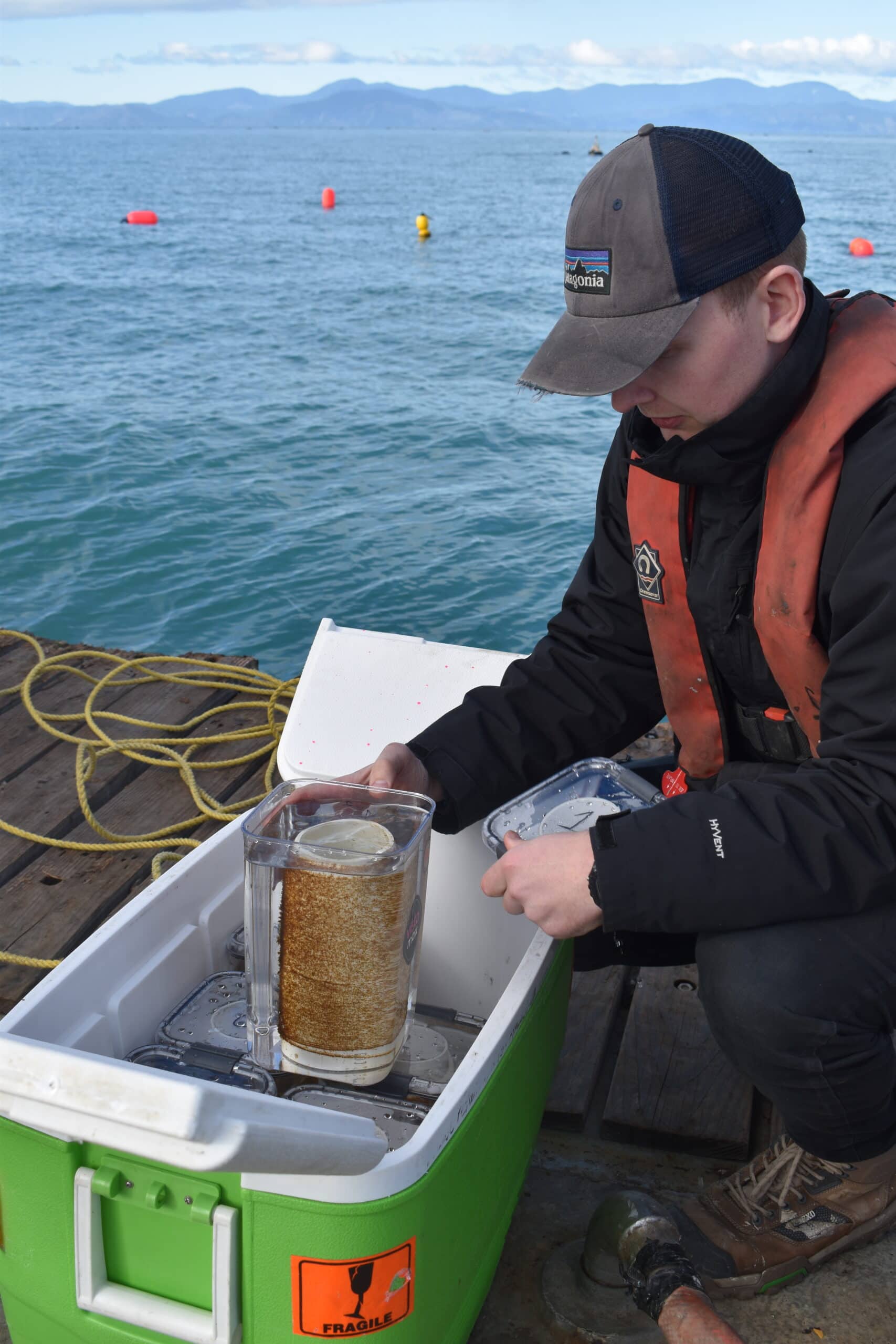New Species
A major reason why OOA is such an attractive opportunity for Aotearoa New Zealand’s aquaculture industry is because it can support the diversification of our farmed species, enabling multi-species shellfish and new seaweed OOA industries to emerge.
Shellfish
New Zealand’s shellfish aquaculture industry is extremely well-regarded world-wide and represents a significant share of our overall seafood industry exports.
However, shellfish OOA in Aotearoa New Zealand is currently limited to one company (Whakatōhea Mussels) and one species (Greenshell™Mussel). If we are to grow this sector, we need to diversify the species of shellfish we farm and generate new opportunities for marine farmers and investors. We are therefore testing oysters at our exposed sites and will be testing scallops in 2024.

Seaweed
There is a global buzz about the potential of seaweed as a new, high-growth, high-value primary production industry.
In 2019 global seaweed production reached nearly 36 million tonnes (wet weight), with 98% originating from Asian countries, particularly China and Indonesia. By 2023, the commercial seaweed market was valued between USD 8.3 and 9.9 billion and is projected to grow to USD 17.8 billion by the early 2030s.
Seaweed aquaculture is gaining global recognition, beyond traditional production areas, as a high-growth, high-value sector within primary production, offering promising avenues for sustainable economic development. Its diverse applications range from high-protein foods and feed, biofertilizer and biofilters, biomaterials and cosmetics.
In Aotearoa New Zealand, seaweed aquaculture is emerging as a key opportunity to diversify the aquaculture industry, particularly through open ocean farming. However, critical knowledge gaps remain in optimizing nursery production and at-sea cultivation for commercially promising native species.
This programme, led by the Cawthron Institute, aims to close these gaps by developing scalable farming systems tailored to local species and environmental conditions. Working in collaboration with national and international partners, the project focuses on advancing cultivation methods for endemic and high-potential species, including kelps such as Lessonia variegata. This species, endemic to Aotearoa New Zealand, has gained increasing interest since the early 2000s for its valuable commercial applications, mainly for the extraction of bioactive compounds and as feed for commercially farmed paua (Haliotis spp.).
Developing cultivation methodologies to support commercial-scale farming of species like L. variegata is important to ensure consistent and sustainable production. The programme is also exploring the cultivation potential of other commercially valuable seaweeds (such as Macrocystis pyrifera and Asparagopsis armata) broadening the foundation of a valuable seaweed sector in Aotearoa New Zealand.
Through targeted research and close collaboration with industry partners, this project aims to build the practical foundations needed to enable a viable and sustainable seaweed aquaculture sector that contributes to regional economic development while supporting environmental and industry goals.

